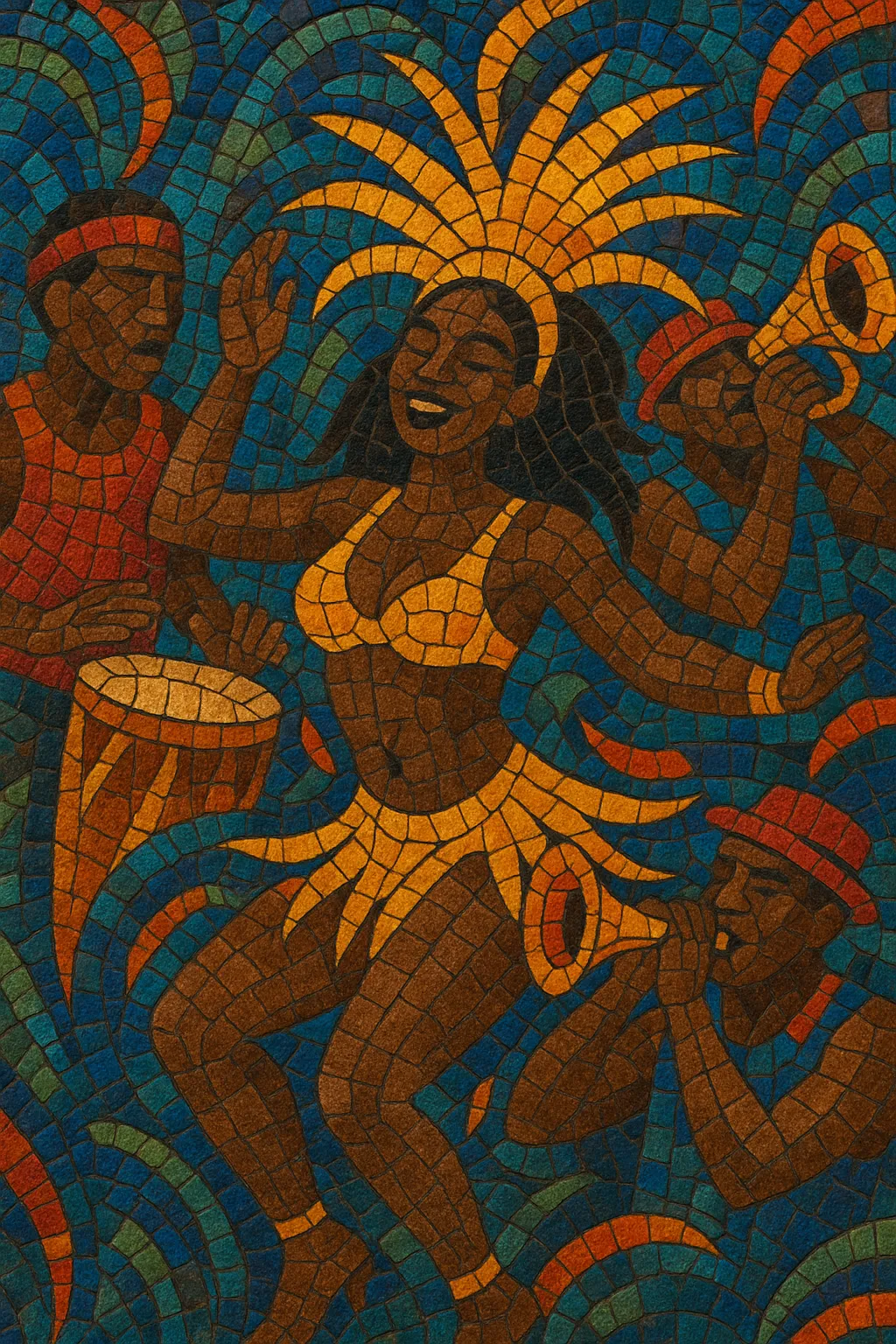Soca is a high-energy Caribbean dance music that emerged in Trinidad and Tobago as the "Soul of Calypso." It modernized calypso’s storytelling and call-and-response with a stronger, club-ready rhythmic engine and brighter, pop-forward hooks. Typical tempos split into two families: groovy soca (roughly 95–120 BPM) with a laid-back, rolling feel, and power soca (roughly 150–170 BPM) designed for mass movement during Carnival road marches.
The sound centers on driving four-on-the-floor kick drums, syncopated snare and hi-hat patterns, and a vibrant percussion “engine room” (congas, cowbell, iron/brake drum, shakers). Steelpan, brass riffs, synth stabs, and crowd-chant vocals are common. Lyrics celebrate fête culture—wining, bacchanal, freedom, community, and love—crafted as big, anthemic hooks built for parades, stages, and stadiums.
Soca took shape in Trinidad and Tobago in the early 1970s, led by Garfield Blackman (Lord Shorty, later Ras Shorty I). Seeking to refresh calypso for younger audiences, he fused calypso’s narrative vocals and call-and-response with Indo-Trinidadian rhythmic elements (notably tassa drumming) and contemporary soul/funk/disco grooves. Early landmarks such as “Endless Vibrations” (1974) set the template: bigger drums, brighter hooks, and dance-centric arrangements.
Throughout the Caribbean, soca cross-pollinated with Haitian konpa/cadence and Dominica’s cadence-lypso. Arrow (Montserrat) propelled soca worldwide with “Hot Hot Hot” (1982), while touring bands and sound systems spread the style across carnivals and fêtes in Barbados, Saint Vincent, Antigua, and the diaspora (Notting Hill, Caribana, New York Labor Day).
Soca’s live-stage competition culture (e.g., International Soca Monarch from the 1990s) pushed production and performance scale. The era crystallized two performance tempos: power soca for mass jumping and groovy soca for mid-tempo sway. Crossovers reached pop charts—Kevin Lyttle’s “Turn Me On” (2003) and Rupee’s “Tempted to Touch” (2004)—bringing soca to global dance floors.
Digital production and global collaboration connected soca with dancehall, EDM, and Afrobeats while retaining Carnival roots. Island scenes developed distinct flavors—Barbados’ bashment soca, Saint Lucia’s Dennery Segment, Grenada’s “jab jab” aesthetic—alongside Trinidad’s powerhouse acts. Today soca anchors Caribbean Carnival circuits worldwide, balancing tradition (steelpan, call-and-response) with contemporary pop and festival sonics.


